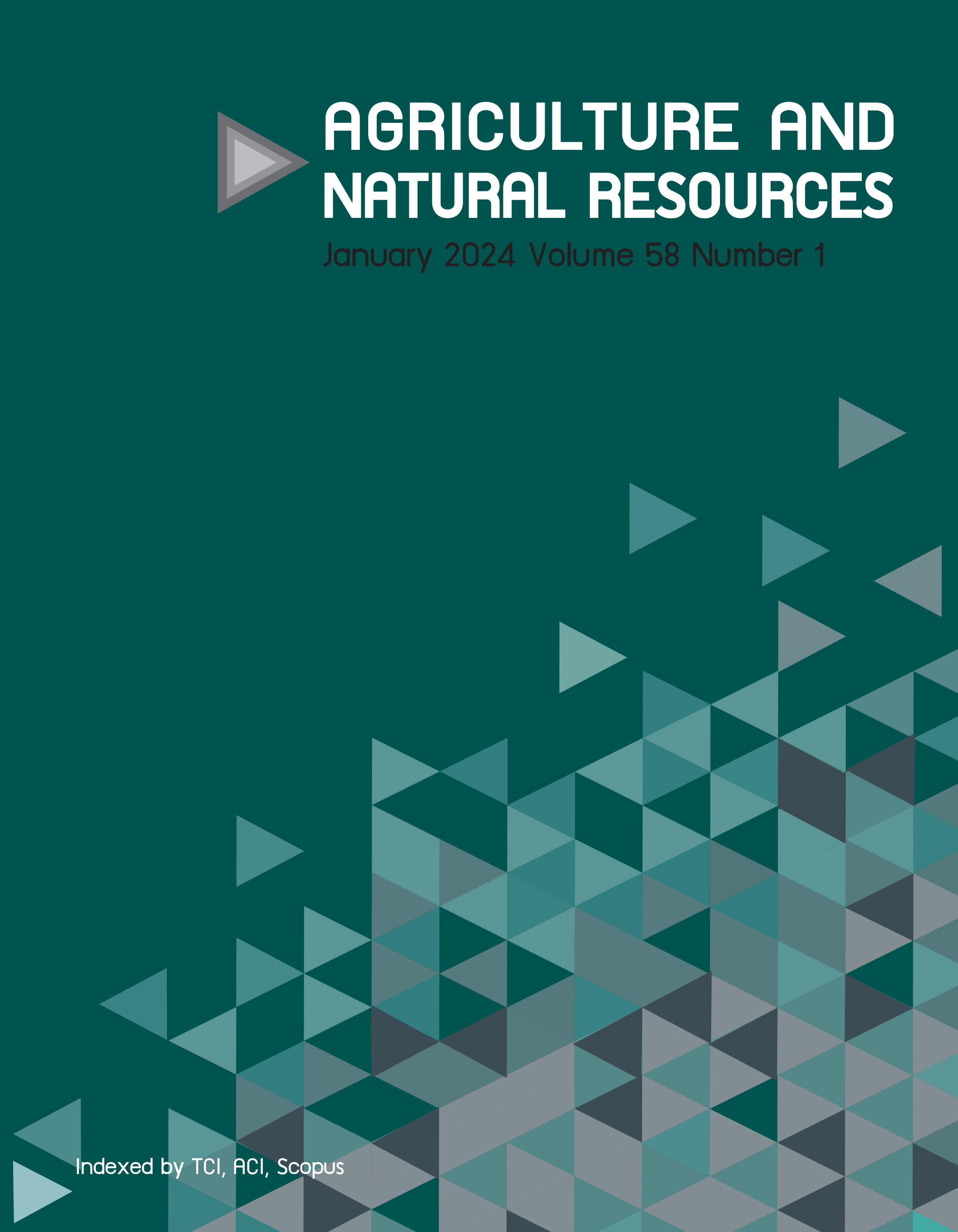Effect of bentonite and cassava tails and stalk on cassava planted in an upland Grossarenic Grossarenic Paleustult and soil property changes
Keywords:
Cassava, Organic waste, Soil amendment, Soil property, Tropical sandy soilAbstract
Importance of the work: Cassava in Thailand is mainly planted in low fertility soils of the northeast with unsatisfactorily low yield in return. Treating the soils with soil amendments coupled with adequate fertilization can be a solution to sustainably improving the yield of cassava grown in these soils.
Objectives: To investigate the effects of bentonite (BTN) and cassava tails and stalk (CTS) on cassava yield and some soil properties.
Materials & Methods: A field experiment was conducted over 2 yr in a Grossarenic Paleustult. A split plot design was used, where the main plot consisted of BTN (1.25 t/ha and 2.5 t/ha), CTS (6.5 t/ha and 12.5 t/ha) and a mixture of BTN+CTS (1.25 t/ha + 6.25 t/ha and 2.5 t/ha + 12.5 t/ha), while subplots comprised ratios of N-to-P2 O5-to-K2O fertilization of 0:0:0 and 100:50:100 kg/ha.
Results: Almost all the amended plots with or without NPK chemical fertilizer addition interactively produced greater values for fresh tuber yield, starch yield and aboveground biomass than the non-amended plot, even with 100:50:100 kg/ha (N:P2O5:K2O) added in both growing seasons. Overall, the addition of BTN+CTS at the rate of 2.5 + 12.5 t/ha with NPK fertilization induced the significantly highest N uptake in the tuber and in the leaf plus branch, P uptake in the leaf plus branch and K uptake in the tuber, the stem base
and the leaf plus branch. In addition, soil amendments applied for two consecutive years increased the soil pH, total N and available P, K and Ca contents over the control that had no addition of these soil amendments.
Main finding: The BTN+CTS treatment, after application for two consecutive years clearly increased the yield of cassava and improved some major soil properties.
Downloads
Published
How to Cite
Issue
Section
License
Copyright (c) 2024 Kasetsart Universityonline 2452-316X print 2468-1458/Copyright © 2022. This is an open access article under the CC BY-NC-ND license (http://creativecommons.org/licenses/by-nc-nd/4.0/),
production and hosting by Kasetsart University of Research and Development Institute on behalf of Kasetsart University.







